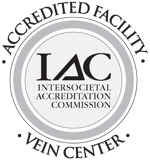As experienced vascular doctors, we have cared for people with varicose and spider veins since 1963. Beyond the medical issues and advances in care that we have seen, we have also had the opportunity to hear our patient concerns about vein treatment and some of the common myths and general misinformation that exists.
Determining what information to trust can be difficult, which is why consulting with a board-certified vascular surgeon who specializes in treating varicose and spider veins can be a wise choice.
To ensure that you are not discouraged from getting your legs to look and feel as good as they can, let us examine some of these misconceptions.
Are Varicose and Spider Veins Dangerous if Left Untreated?
Many patients are scared into having their veins treated out of fear of a health problem. Patients frequently tell us that they have been told that if they do not take care of their veins, they could get a blood clot, lose their leg, or even die! Fortunately, none of that propaganda has any scientific basis behind it.
Download our eBook on the cost Varicose Vein Treatment
Varicose veins—the larger, protruding veins—may be uncomfortable and unsightly, but they are, in no way, dangerous. Quite often the only treatment that patients require is to be reassured that their veins do not present health problems. Spider veins (telangiectasias) rarely cause discomfort. They are a source of concern only in terms of their appearance for the person unfortunate enough to have them!
Wearing High Heels or Crossing My Legs Causes Varicose Veins
While steeped in tradition, this fallacy also has little scientific backing. Theoretically, crossing one’s legs could impede blood flow out of the legs, thus building up pressure in the leg veins causing them to bulge. However, that is not what actually occurs in the human leg! Pressure would have to be rather intense and prolonged to impede circulation out of the leg — and if so, might lead to blood clotting rather than varicose veins. Fortunately, for those who enjoy wearing spiked heels, there is no evidence to support the causation of varicose veins by those 4” stilettos! Primary causes of varicose veins most often arise from genetic predispositions coupled with stressors such as pregnancy or, less so, from prolonged standing.
It is Painful to Have Varicose and Spider Veins Treated
The care of varicose and spider veins has improved dramatically over the years. Treatment is now performed in the office without general anesthesia, without hospitalization and without the need for surgery. Minimally-invasive techniques to rid the leg of unsightly spider veins are virtually pain-free, involving solutions that no longer burn or hurt.
Does Treating Varicose and Spider Veins Make Them Go Away Forever?
True … but not true. The veins that are treated do not come back — they are removed or obliterated for good! Unfortunately, much like coloring one’s hair, this tends to be an ongoing process. The underlying cause for the veins, as stated above, is genetics. We like to tell our patients, “if you don’t like your genes, change your parents!” For better or worse, your genes are you. Completion of childbearing activities will likely reduce the incidence of veins appearing although it will not prevent them entirely. Support stockings may help your legs feel better and will reduce swelling but are not likely to prevent veins from returning!
As always, patients must be educated to reduce misinformation, and we are here to answer them for you. To learn more:









.jpg?width=944&name=Castle-Connolly-Top-Doctors-Emblem-Large%20(4).jpg)